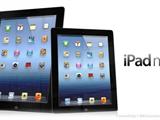Why is Apple still selling the "grandfather-level" iPad 2?
Apple will start selling the next generation iPads next month, namely the iPad Air and a thinner and lighter iPad mini compared to the first generation. Meanwhile, it will continue to sell the iPad 2, which was released as far back as March 2011.
Why does this product, which has been on the market for nearly two years, still exist? The reason is simple: it still sells well.
According to the latest research by market research firm Consumer Intelligence Research Partners (CIRP), while consumers envy the Retina display and faster chips on high-end iPads, many people believe that having an iPad 2 is sufficient.
CIRP stated that in the fiscal quarter ending September 30, 2013, the iPad 2 accounted for about 22% of total iPad tablet sales in the U.S. Although this figure is lower than the 35% in the previous fiscal quarter, it remains a significant proportion. Clearly, certain market sectors still have demand for this tablet, such as the education market, since older models are relatively cheaper, which is attractive to customers with tight budgets.
From another perspective, this is also good for Apple because the profit margin on producing older models might be higher than on new products.
CIRP co-founder Josh Lowitz said: "Conventional wisdom suggests that the education sector and corporate clients still need the iPad 2, but we believe consumer interest in this product is waning. We've already seen the iPad 2's share of overall iPad sales begin to decline."
Apple now offers a Retina-display iPad mini at just $399, the same price as the previous iPad mini. As a result, the price of the first-generation iPad mini has dropped to $299. CIRP expects these product prices to decline even faster.
In its latest research report, CIRP also presented the following insights:
First, since the fourth quarter of 2012, the sales of the iPad mini have remained stable at approximately one-third of all iPad product sales.
Second, for older iPad models, the lower the configuration, the better they sell. In the quarter surveyed by CIRP, the Retina-display iPads with 128GB and 64GB accounted for 13% of total iPad sales in the U.S., down from 30% in the previous quarter. During the same period, the sales share of the 16GB iPad mini rose from 50% in the previous quarter to 73%.
Third, new users may be more sensitive to price than early adopters, so they tend to choose products with lower configurations. This is an important rule, and CIRP believes this rule applies equally to other products.
Lowitz said: "We will start to understand the lifecycle of the iPad. Unlike cellphones tied to two-year service contracts, there is no unlock date for the iPad. From this perspective, it is more similar to computers, iPods, or televisions. Once purchased, such products may be used for a long time."



